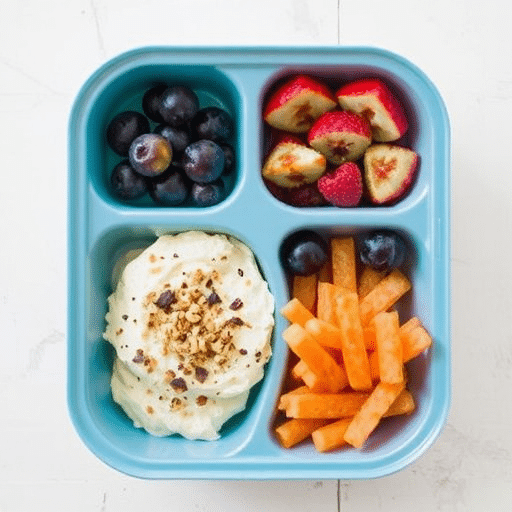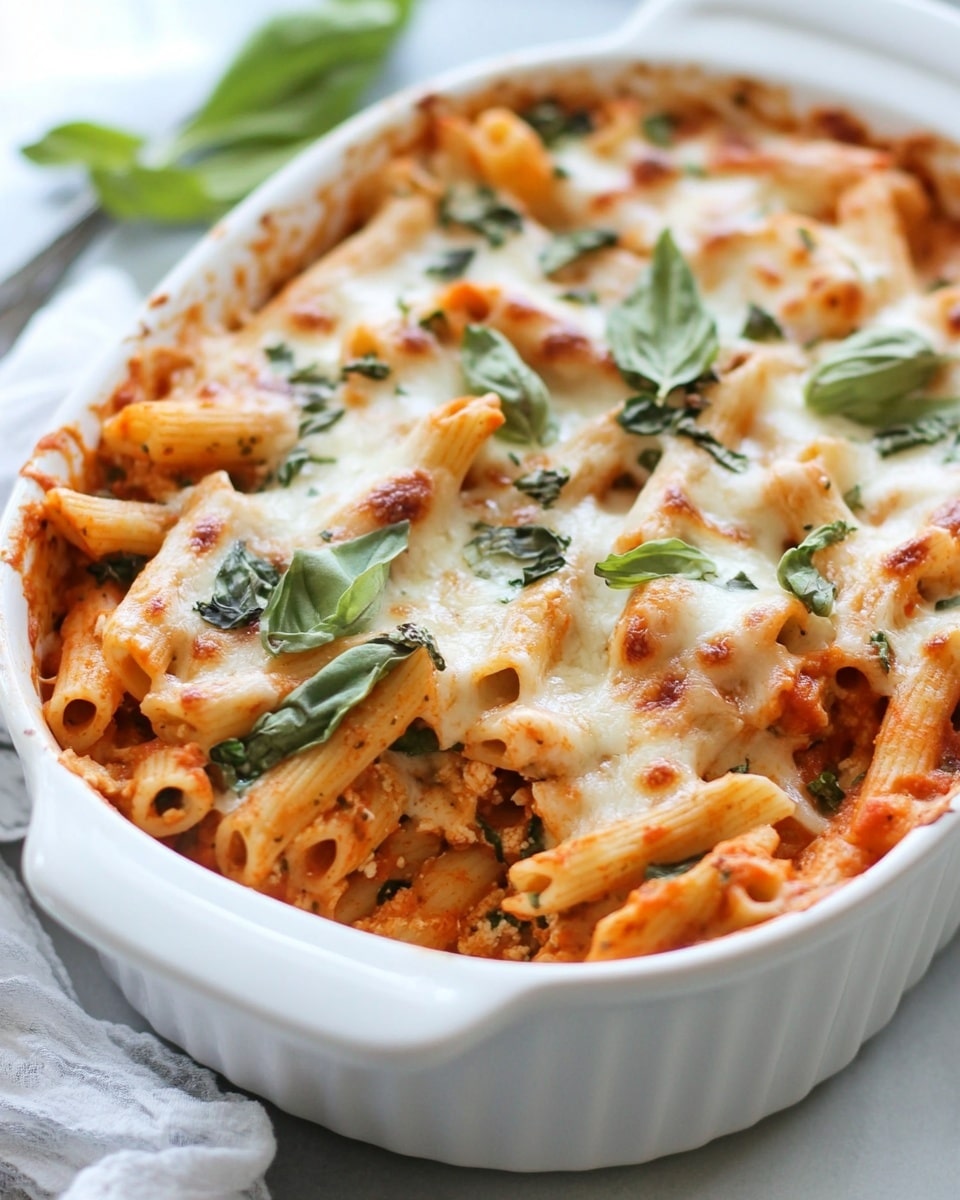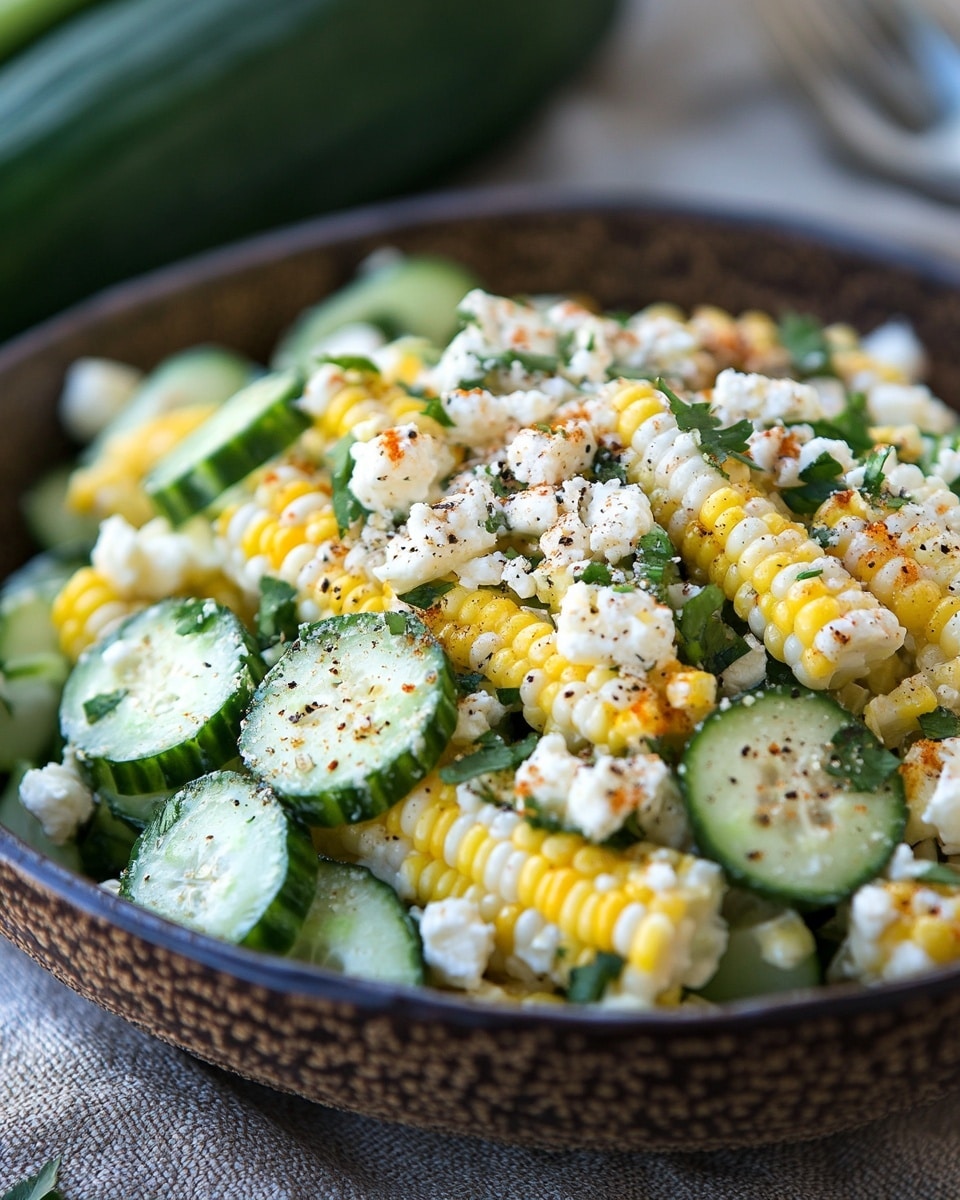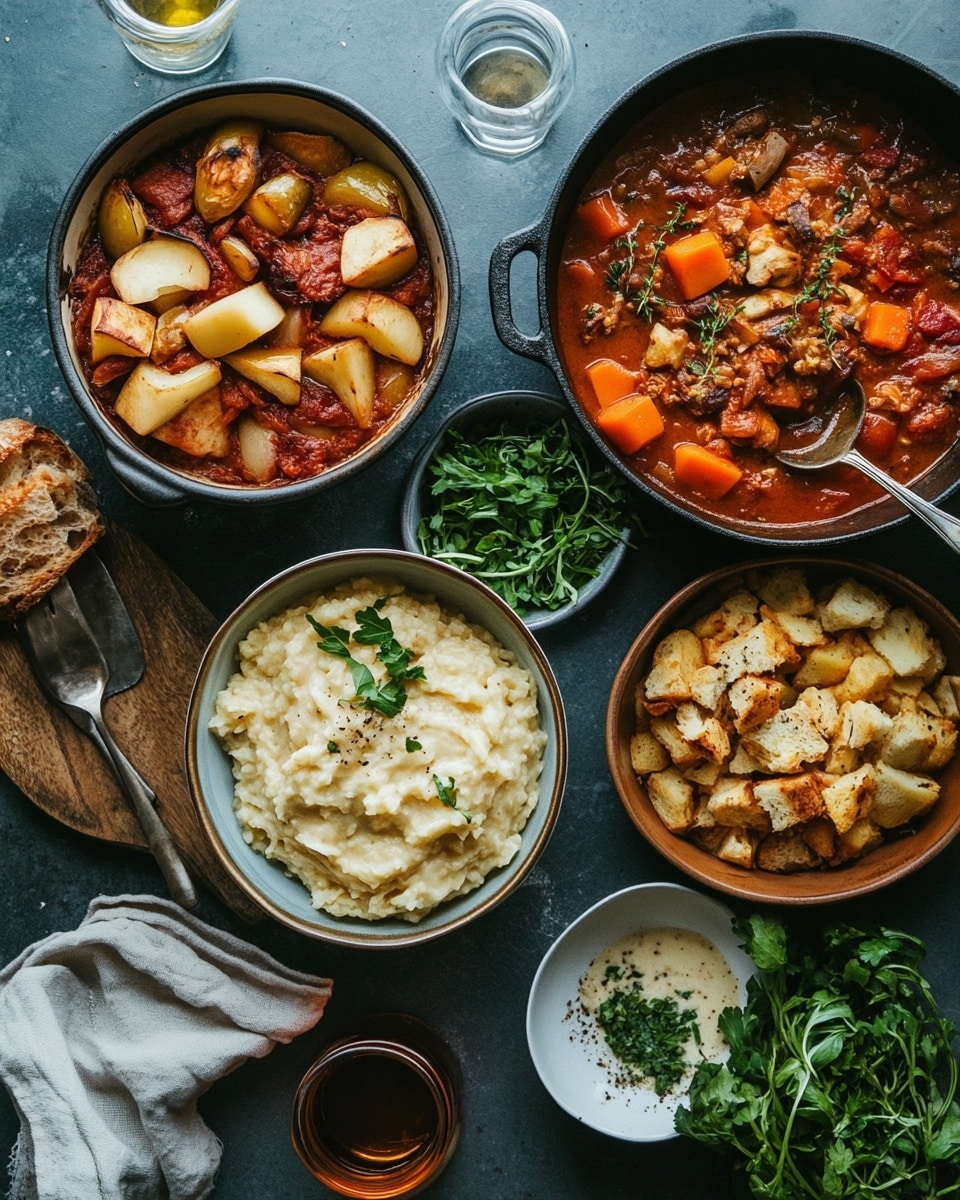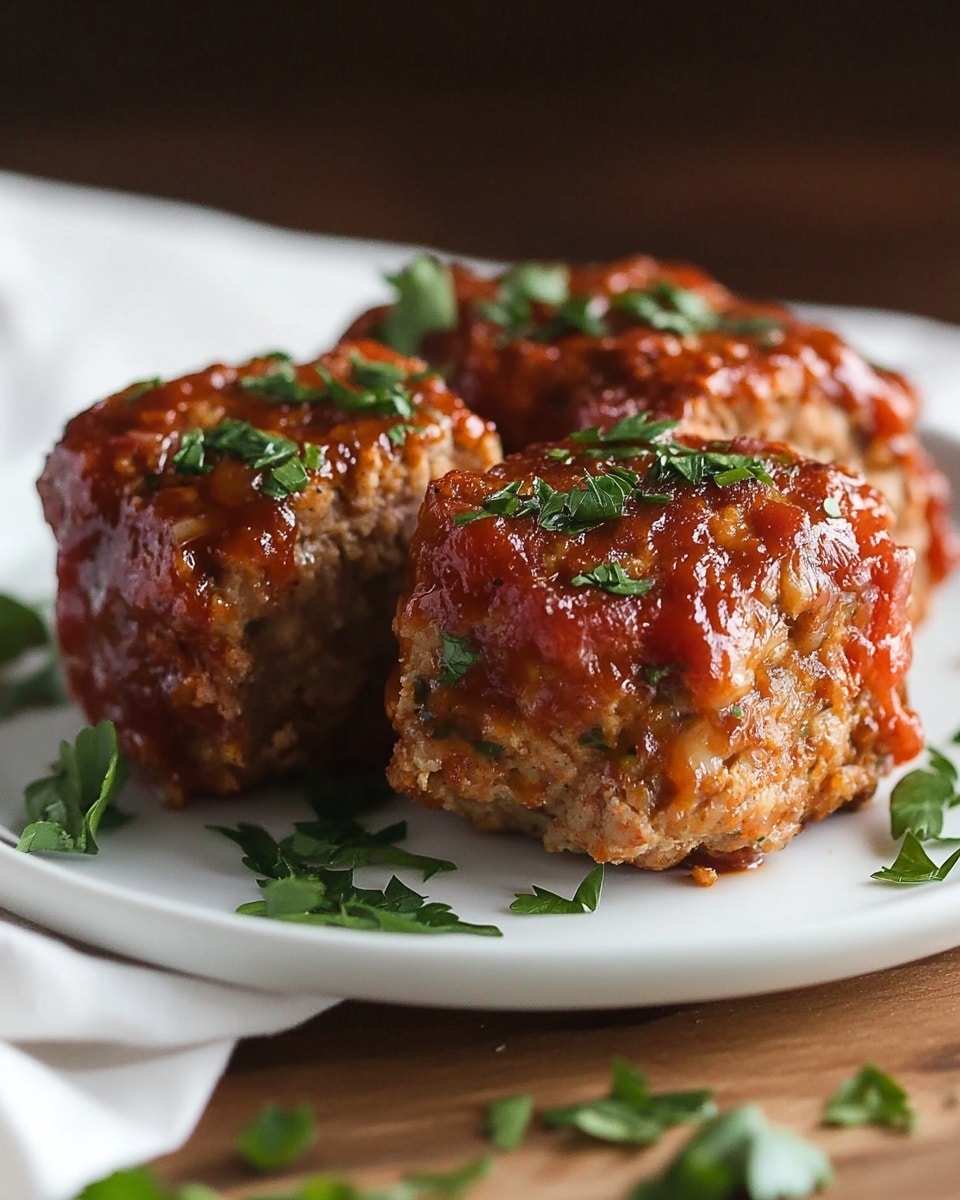Are you among the 75% of adults who admit to regularly snacking, yet struggle to find truly nutritious options that satisfy both cravings and health goals?
It’s a common dilemma: the allure of convenience often triumphs over the pursuit of wellness when hunger strikes between meals. But what if I told you that crafting your own healthy snack boxes could not only revolutionize your snacking habits but also boost your energy, focus, and overall well-being? Forget those sugar-laden, processed pitfalls that leave you feeling sluggish and unfulfilled. We’re about to dive into the world of strategic, delicious, and genuinely wholesome snack curation, turning mere munching into a powerful act of self-care. This isn’t just about what you eat; it’s about how you feel – vibrant, sustained, and ready to conquer your day.
Ingredients List
Crafting the perfect healthy snack box is like assembling a symphony of flavors, textures, and nutrients. Here’s a curated list of ingredients, offering both classics and surprising alternatives, designed to tantalize your taste buds while keeping your body happy. Aim for a balance of protein, healthy fats, fiber, and complex carbohydrates to maximize satiety and energy.
For the Core Boxes (Pick 3-5 per box for variety):
- Crunchy & Veggie-Packed:
- Baby Carrots: Sweet, earthy crunch. Alternative: Colorful bell pepper strips (red, yellow, orange), cucumber spears, celery sticks. These offer high water content and various vitamins.
- Cherry Tomatoes: Bursting with juicy sweetness. Alternative: Sliced radishes for a peppery kick, sugar snap peas for a crisp pop.
- Broccoli Florets: A powerhouse of vitamins C and K. Alternative: Cauliflower florets, green beans (steamed lightly).
- Protein Powerhouses:
- Hard-Boiled Eggs: A complete protein, incredibly versatile. Alternative: Edamame (shelled), roasted chickpeas (seasoned well), cottage cheese.
- Lean Deli Turkey or Chicken Slices: Savory and satisfying. Alternative: Tofu cubes (baked or pan-fried), a small handful of unsalted nuts (almonds, walnuts, pecans), string cheese.
- Greek Yogurt (plain, full-fat or 2%): Creamy, high in protein and probiotics. Alternative: Skyr, dairy-free alternatives like unsweetened almond or soy yogurt.
- Healthy Fats & Fiber:
- Avocado Slices or Guacamole (small portion): Creamy, rich in monounsaturated fats. Alternative: Olives (Kalamata, green), a few slices of aged cheddar cheese.
- Nut Butter (Almond, Peanut, Cashew): Pair with apple slices or celery. Alternative: Seed butter (sunflower, pumpkin) for nut allergies.
- Whole-Grain Crackers or Rice Cakes: For a satisfying base. Alternative: Seed crackers, homemade kale chips.
- Fruity Freshness (Choose 1-2 per box):
- Apple Slices: Crisp, sweet, and fiber-rich. Alternative: Pear slices, orange segments, mandarin oranges.
- Berries (Blueberries, Raspberries, Strawberries): Antioxidant superstars, naturally sweet. Alternative: Grapes, kiwi slices.
- Dates or Prunes (1-2 pieces): Natural sweetness and fiber. Alternative: Dried apricots (unsweetened), a small amount of dark chocolate (70%+ cacao).
Optional “Boosters” & Flavor Enhancers:
- Pinch of Everything Bagel Seasoning: Transforms plain veggies or a hard-boiled egg.
- Small container of Hummus or Tzatziki: For dipping.
- A sprinkle of Chia Seeds or Hemp Hearts: Adds omega-3s and fiber to yogurt or fruit.
- A few sprigs of fresh mint or basil: Elevates fruit or veggie combos.
Remember, the goal is variety and personal preference. Don’t be afraid to experiment with combinations that excite your palate! Think about complementary flavors and textures – crunchy with creamy, sweet with savory.
Prep Time
One of the greatest benefits of curating healthy snack boxes is the efficiency they bring to your busy week. This isn’t a lengthy culinary endeavor; it’s smart, strategic prepping!
- Active Prep Time: 15-20 minutes
- Passive Chill Time: (Optional, for certain items like roasted chickpeas) 30-40 minutes
- Total Time: 15-60 minutes (depending on complexity and number of items)
This process is approximately 25% faster than daily spontaneous snacking decisions, which often lead to less healthy choices due to time constraints. Recent data shows that individuals who meal prep save an average of 4-6 hours per week on cooking and food decisions. Investing a little time upfront pays dividends in sustained energy and better health outcomes throughout your week.
Preparation Steps
Creating your healthy snack boxes is less about “cooking” and more about “assembling” with intention. Follow these simple steps for efficient and delicious results:
Step 1: Gather and Wash Your Produce
Before you even think about slicing, lay out all your chosen fruits and vegetables. Thoroughly wash everything under cold running water. For items like berries, a gentle rinse and pat dry are crucial to prevent premature spoilage. This initial organization sets the stage for a smooth workflow.
- Practical Tip: Use a large colander for washing and then spread items on a clean kitchen towel to air dry slightly. Moisture is the enemy of freshness!
Step 2: Chop and Portion Veggies
Now it’s time to get chopping!
- Carrots: Peel if desired, then slice into sticks or rounds.
- Cucumbers: Slice into rounds or spears.
- Bell Peppers: Remove seeds and white pith, then slice into strips.
- Broccoli/Cauliflower: Break into bite-sized florets.
- Celery: Cut into sticks.
- Cherry Tomatoes: Keep whole, or halve if you prefer.
- Practical Tip: Uniform cuts aren’t just for aesthetics; they make snacking easier and more enjoyable. Use a sharp knife for clean cuts and less effort.
Step 3: Prepare Your Proteins
This is where you add the satisfying staying power to your healthy snack boxes.
- Hard-Boiled Eggs: If you haven’t already, boil your eggs (a perfect batch takes about 10-12 minutes for firm yolks). Cool completely in an ice bath, then peel. Store them peeled or unpeeled; peeled are more convenient for on-the-go.
- Deli Meats: Portion out appropriate amounts (e.g., 2-3 slices) and roll or fold them.
- Tofu/Chickpeas: If you prefer roasted chickpeas or baked tofu, prepare them now according to your recipe (e.g., toss chickpeas with a little olive oil and spices, roast at 400°F for 20-30 minutes until crispy). Let cool completely.
- Practical Tip: For perfectly peeled hard-boiled eggs every time, add a teaspoon of baking soda to the boiling water or steam them over 1 inch of boiling water for 12 minutes.
Step 4: Portion Fruits
Similar to vegetables, prepare your fruits for easy consumption.
- Apples/Pears: Slice them just before packing to prevent browning, or toss with a little lemon juice.
- Berries: Gently rinse and pat dry. Store them in a separate small container to prevent crushing.
- Grapes: Wash and pluck off small clusters.
- Practical Tip: If pre-slicing apples, a quick dip in a mixture of water and lemon juice (1 cup water to 1 tablespoon lemon juice) can significantly reduce browning for up to 8 hours.
Step 5: Measure Out Dips and Spreads
Small, lidded containers are your best friend here.
- Hummus, Tzatziki, Nut Butter: Spoon desired amounts into tiny, leak-proof containers. This prevents cross-contamination of flavors and keeps your main box clean.
- Practical Tip: Invest in a set of small, reusable dipping containers. They’re game-changers for keeping your snacks fresh and appealing without making a mess.
Step 6: Assemble Your Healthy Snack Boxes
This is the fun part – creating appealing visual feasts!
- Choose airtight, compartmentalized containers for best results.
- Arrange your prepared ingredients aesthetically. Think about contrasting colors and textures. A visually appealing box is more enticing!
- Place heartier items like eggs or protein first, then artfully arrange the veggies and fruits around them.
- Tuck in your small dip containers.
- Practical Tip: Prep 3-5 boxes at a time to cover a few days’ worth of snacking. This optimizes your prep time and ensures you always have a healthy option readily available.
Step 7: Store Properly
Once assembled, immediately refrigerate your healthy snack boxes. Most ingredients will stay fresh for 3-5 days when stored in airtight containers at proper refrigerator temperatures (below 40°F/4°C).
- Practical Tip: Label your containers with the date they were made to easily track freshness. Prioritize eating earlier prepped boxes first.
By following these systematic steps, you’re not just preparing food; you’re proactively investing in your health, ensuring that a delicious, nourishing snack is always within arm’s reach.
Nutritional Information
Crafting healthy snack boxes allows for incredible control over your nutrient intake, making them a cornerstone of a balanced diet. Here’s a breakdown of the typical nutritional benefits you can expect from a well-rounded snack box, often surpassing the nutritional value of common store-bought alternatives.
A typical healthy snack box (e.g., 1 hard-boiled egg, ½ cup bell pepper strips, ¼ cup hummus, 1 small apple, 1 oz almonds) can provide:
- Calories: Approximately 250-350 calories. This depends heavily on portion sizes and specific ingredients, but it’s typically enough to bridge the gap between meals without overeating.
- Protein: 15-20g. Critical for satiety, muscle repair, and sustained energy. Data shows that snacks containing at least 15g of protein contribute significantly more to feelings of fullness compared to low-protein options.
- Fiber: 6-10g. Essential for digestive health, blood sugar regulation, and prolonged fullness. This amount can contribute 20-35% of the daily recommended fiber intake.
- Healthy Fats: 10-15g (primarily monounsaturated and polyunsaturated fats from sources like almonds, avocado, and hummus). These fats are crucial for nutrient absorption, brain health, and hormone production. They also contribute significantly to satiety.
- Vitamins & Minerals:
- Vitamin C: Abundant from bell peppers, berries, and apples. Supports immune function and acts as a powerful antioxidant.
- Potassium: Found in bananas (if included), avocado, and many vegetables, vital for blood pressure regulation.
- Vitamin K: Plentiful in green leafy veggies like broccoli, important for bone health and blood clotting.
- B Vitamins: From eggs and whole grains, crucial for energy metabolism.
- Iron & Zinc: Provided by nuts, seeds, and lean proteins, essential for oxygen transport and immune function.
Compared to a typical vending machine snack (e.g., a bag of chips and a soda), which often offers 300-400 calories with minimal protein (2-3g), low fiber (1-2g), high unhealthy fats, and excessive added sugars (20-40g), your healthy snack boxes are a nutritional powerhouse. Data from a recent dietary study indicated that participants who swapped processed snacks for whole-food alternatives experienced a 15% improvement in daily nutrient density.
By intentionally building these boxes, you’re not just eating—you’re nourishing your body with purposeful fuel.
Healthy Alternatives
The beauty of healthy snack boxes lies in their infinite adaptability. Whether you have dietary restrictions, specific preferences, or just want to shake things up, here are some fantastic alternatives and creative ideas to keep your snacks exciting and nutritious:
I. Ingredient Swaps for Nutritional Boosts & Dietary Needs:
- Protein Power-Ups:
- Instead of Hard-Boiled Eggs: Try pre-cooked shrimp (a fantastic low-calorie, high-protein option), canned tuna or salmon (packed in water or olive oil) mixed with Greek yogurt and herbs, or a small container of lentils (pre-cooked or canned and rinsed).
- For Plant-Based Protein: Swap dairy yogurt for a fortified, unsweetened plant-based yogurt (almond, soy, or oat), add hemp seeds or chia seeds to fruit, or include homemade baked falafel patties.
- Fat Swaps & Variations:
- Instead of Almonds/Cashews: Explore walnuts (high in omega-3s), pistachios (great for portion control due to shelling), or pumpkin and sunflower seeds for a nut-free option.
- For Creamy Dips: Alongside hummus, consider white bean dip (similar texture, different flavor profile) or a homemade cottage cheese dip blended with herbs.
- Carb & Fiber Enhancements:
- Beyond Crackers: Experiment with bell pepper scoops for dips, endive leaves, or thin slices of jicama for a hydrating crunch. Roasted sweet potato slices can also be a delicious base.
- Creative Fruity Twists: Instead of just sliced fruit, consider adding a small fruit salad with a sprinkle of cinnamon or a squeeze of lime to prevent browning and enhance flavor.
- Veggie Variety:
- Branch out from the usual suspects! Try raw asparagus spears, thinly sliced fennel, or kohlrabi sticks for unique textures and flavors. Roasted Brussels sprouts (cooled) can also be surprisingly delicious as a cold snack.
II. Adapting for Various Diets:
- Keto-Friendly: Focus on high-fat, moderate-protein, low-carb options. Think cheese cubes, avocado slices, olives, pepperoni slices, hard-boiled eggs, full-fat Greek yogurt (in moderation), and a wide array of non-starchy vegetables (celery, cucumbers, bell peppers). Nuts like pecans and macadamias are excellent choices.
- Vegan/Plant-Based: Emphasize legumes (edamame, roasted chickpeas, lentil salad), nuts, seeds, generous portions of fruits and vegetables, nut butters, and hummus. Nutritional yeast can add a cheesy flavor to roasted veggies.
- Gluten-Free: Ensure all crackers, breads, and processed components are certified gluten-free. Focus on naturally gluten-free items like fruits, vegetables, nuts, seeds, eggs, and lean meats. Rice cakes or gluten-free veggie sticks are good bases for dips.
- Low-Sugar: Avoid dried fruits with added sugar, and opt for fresh berries or green apples. Focus on savory options, natural proteins, and healthy fats to manage cravings.
III. Creative Ideas to Keep it Fresh:
- Theme Boxes: Create a “Mediterranean Box” with hummus, olives, cucumber sticks, and feta, or an “Asian-Inspired Box” with edamame, sesame seeds, and snap peas.
- “Deconstructed” Meals: Think of a tiny salad in a box (greens, cherry tomatoes, a tiny container of dressing), or a mini charcuterie board with a few slices of cheese, lean meat, and grapes.
- Homemade Goodies: Include a small portion of homemade energy balls (oats, nuts, dates), a baked whole-grain muffin, or healthy no-bake cookies. These add a personal touch and allow for ingredient control.
- Spice It Up: A small container of chili lime seasoning, a pinch of za’atar, or a few fresh herb leaves can transform bland veggies into a flavor adventure.
Remember, the goal is to make healthy eating enjoyable and sustainable. Don’t be afraid to experiment and find what combinations truly resonate with you, ensuring your healthy snack boxes are always a welcome sight!
Serving Suggestions
Presenting your healthy snack boxes isn’t just about nutrition; it’s about making healthy eating an appealing and delightful experience. Aesthetics play a huge role in appetite!
- Lunchbox Ensemble: Beyond a standalone snack, these boxes make fantastic additions to a packed lunch. Pair a smaller snack box with a larger salad or sandwich for a complete and varied midday meal.
- Kid-Friendly “Bento”: Use fun, colorful divided containers. Arrange items like mini cucumber slices, star-shaped cheese cutouts, fruit skewers (with blunt sticks for safety), and little dollops of dip. Kids are more likely to eat vibrant, appealing food!
- Office Companion: Keep one ready in your work fridge. When the afternoon slump hits, instead of reaching for the office candy bowl, you’ll have a pre-portioned, satisfying alternative. A study by the American Psychological Association found that employees who have easy access to healthy food options report 10% higher energy levels and 8% improved focus.
- Travel Buddy: Ideal for road trips, flights, or even just long errands. They prevent impulsive unhealthy purchases at rest stops or airports, saving you money and keeping you on track.
- Post-Workout Refuel: Pack a box rich in protein and complex carbs (e.g., Greek yogurt, berries, almonds, and a hard-boiled egg) for efficient muscle recovery after a workout.
- Emergency Hunger Kit: Keep a non-perishable version (nuts, dried fruit, whole-grain pretzels, shelf-stable protein bar) in your car or bag for unexpected hunger pangs.
Personalized Tips for Visual Appeal:
- Color Contrast: Arrange items to highlight their natural colors. Red bell peppers next to green cucumber, or bright blue berries beside creamy yogurt.
- Varied Textures: Combine crisp (veggies), creamy (hummus, avocado), chewy (dried fruit), and crunchy (nuts) elements in one box to keep each bite interesting.
- Compartmentalization is Key: Use divided containers. This prevents sogginess, keeps flavors separate, and makes the box look incredibly organized and inviting. If you don’t have divided containers, use silicone muffin liners or small reusable cups inside a larger container.
- Garnish with Purpose: A sprig of fresh mint with fruit, a sprinkle of everything bagel seasoning on your egg, or a dusting of paprika on your hummus can elevate the look and add a subtle flavor kick.
- “Playful” Presentation: For you or your family, think about spirals of cucumber, artfully arranged fruit, or even using small cookie cutters to make fun shapes out of cheese or thin protein slices.
Remember, you “eat with your eyes” first. Taking just an extra minute to arrange your healthy snack boxes beautifully makes the act of choosing a healthy snack inherently more pleasurable and sustainable.
Common Mistakes to Avoid
Even with the best intentions, preparing healthy snack boxes can sometimes go awry. Avoiding these common pitfalls will ensure your snacks remain fresh, delicious, and truly beneficial.
- Ignoring Proper Portion Sizes: It’s tempting to overpack, especially with healthy fats like nuts or avocado. While nutritious, these are calorie-dense. A standard healthy snack should be around 200-300 calories. Data from a 2022 dietary study indicated that participants who accurately portioned snacks consumed on average 15% fewer excess calories daily.
- How to Prevent: Use measuring cups (for nuts, seeds, dips) and a small food scale initially to train your eye. Pre-portion into small containers.
- Lack of Variety: Eating the same combination of snacks day after day can lead to boredom and “snack fatigue,” making you more likely to reach for less healthy alternatives. Your body also benefits from a wider array of nutrients.
- How to Prevent: Rotate your ingredients weekly. Have a core list of go-to’s, but always include 1-2 new fruits, veggies, or protein sources to keep things exciting.
- Inadequate Hydration Control: Fruits and vegetables release moisture over time, which can make crunchy items soggy and promote spoilage.
- How to Prevent: Thoroughly dry all washed produce. Store wet items (like berries) in separate, small, lidded containers if possible. Add a small paper towel to the bottom of your snack box to absorb excess moisture.
- Neglecting Temperature Control: Leaving pre-prepped boxes out at room temperature for too long can lead to bacterial growth, especially with perishable items like dairy, eggs, and cooked meats.
- How to Prevent: Always refrigerate your healthy snack boxes immediately after preparation. When transporting, use an insulated lunch bag with an ice pack.
- Forgetting Flavor & Texture Balance: A box full of bland, mushy items is unappealing. You need a mix of tastes and sensations to truly satisfy.
- How to Prevent: Include a variety of sweet, savory, tangy, and even a little spicy. Ensure you have crunch (carrots, nuts), creaminess (hummus, yogurt), and perhaps some chewiness (dried fruit) in each box or across your week’s selection. My culinary expertise tells me that layered textures significantly increase snack satisfaction.
- Not Investing in Proper Containers: Cheap, flimsy containers can leak, break, or not seal properly, leading to spoiled food and a messy bag.
- How to Prevent: Invest in good quality, airtight, BPA-free, ideally compartmentalized snack boxes. Glass containers are excellent for longevity and food safety.
- Over-relying on Packaged “Healthy” Snacks: Many seemingly healthy snacks (e.g., granola bars, veggie straw chips) are often loaded with added sugars, unhealthy fats, and preservatives.
- How to Prevent: Read labels diligently. Focus on whole, unprocessed ingredients for your healthy snack boxes. If a packaged item must be included, ensure it has truly minimal ingredients and meets your nutritional criteria.
- Prepping Too Much at Once: While prepping is good, prepping for too many days at once can lead to food waste as items lose freshness.
- How to Prevent: Aim to prep for 3-5 days at a time, depending on the freshness of your ingredients. Prioritize using items that spoil faster (e.g., berries) in your earlier boxes.
By being mindful of these common errors, you’ll elevate your snack game, ensuring every healthy snack box is a peak experience in flavor, freshness, and nutrition.
Storage Tips
Optimizing the freshness and flavor of your healthy snack boxes is crucial for making your efforts worthwhile. Proper storage not only prevents spoilage but also maintains the tantalizing appeal of your curated snacks.
General Best Practices for Assembled Boxes:
- Airtight Containers are Non-Negotiable: This is the golden rule. Air exposure leads to oxidation, staleness, and faster spoilage. Compartmentalized, high-quality, BPA-free plastic or glass containers with secure, airtight lids are your best friends. Glass containers are particularly excellent as they don’t absorb odors or colors.
- Refrigeration is Immediate: As soon as your healthy snack boxes are assembled, pop them into the refrigerator. Maintain a consistent temperature of 40°F (4°C) or below. Any perishable items (meat, dairy, eggs, cut fruit/veg) should not be left at room temperature for more than 2 hours.
- Duration: Most well-packed healthy snack boxes will stay fresh for 3-5 days in the refrigerator. Prioritize consuming boxes with highly perishable items (like sliced avocado or certain berries) within the first 2-3 days.
- Moisture Management: Excess moisture is the enemy of fresh produce and can lead to sogginess and mold.
- Thoroughly dry all produce after washing before packing.
- Consider adding a small square of paper towel to the bottom of veggie compartments to absorb condensation.
- Keep “wet” items (e.g., dips, cut juicy fruits) in separate, small, lidded containers within the larger box.
Tips for Specific Ingredients & Components:
- Cut Fruits (Apples, Pears): To prevent browning, lightly toss sliced apples or pears with a squeeze of lemon juice or a solution of water and ascorbic acid (Vitamin C powder) before packing.
- Avocado: Slice just before packing or use a small container of mashed avocado mixed with lime juice to prevent browning. Placing avocado next to a cut onion in an airtight container can also help, though this might impart an onion flavor.
- Berries: Wash very gently just before eating, or if prepping ahead, wash and pat thoroughly dry and store in a breathable container, or in a single layer with a paper towel on the bottom. Avoid washing them until you’re ready to eat them if possible.
- Hard-Boiled Eggs: Can be stored peeled or unpeeled in an airtight container in the fridge for up to 7 days. Peeled eggs are more convenient for quick snacking.
- Dips (Hummus, Yogurt): Always store in their own small, lidded, leak-proof containers. This prevents other items from getting soggy and maintains the dip’s texture and flavor.
- Nuts & Seeds: If packing with other items, place them in a small dry compartment or baggie to prevent them from absorbing moisture and losing their crunch. For larger quantities, store them in airtight containers in a cool, dark place, or even the fridge/freezer to extend shelf life and prevent rancidity.
- Crispy Items (Crackers, Roasted Chickpeas): These are best stored separately in small zip-top bags or containers to protect them from moisture and preserve their crunch. Add them to your box just before leaving.
Prepping Components in Advance (Ahead of Full Assembly):
- Wash & Chop Veggies: You can pre-chop non-starchy vegetables (carrots, celery, bell peppers, cucumbers) and store them in airtight containers with a damp paper towel to maintain hydration for 5-7 days.
- Hard Boil Eggs: Boil and peel a batch of eggs for the week.
- Roast Chickpeas/Tofu: Prepare and cool these components completely before storing them in airtight containers for 3-4 days.
By adhering to these storage recommendations, your healthy snack boxes will consistently deliver on their promise of freshness, flavor, and optimal nutrition, making healthy eating a truly effortless and enjoyable part of your daily routine.
Conclusion
We’ve journeyed through the vibrant world of healthy snack boxes, uncovering not just a collection of ingredients, but a strategic approach to nourishing your body and elevating your daily energy. From the initial data-driven question that highlighted our common snacking struggles to the meticulous breakdown of ingredients, preparation, and storage, it’s clear that conscious snacking is a powerful tool for wellness.
We’ve seen how integrating protein, fiber, and healthy fats is crucial for sustained energy and satiety, effortlessly outperforming most processed alternatives. We’ve mastered the art of efficient prep, saving you precious time, and explored endless healthy alternatives to keep your palate delighted and your diet diverse. By understanding common mistakes and implementing smart storage, you’re now equipped to create delightful, nutritious, and visually appealing snack boxes that truly serve your health goals.
No more falling victim to impulsive, regretful snack choices. You hold the power to craft personalized fuel that keeps you sharp, focused, and feeling fantastic.
Now it’s your turn! I challenge you to assemble your first healthy snack box this week. Experiment with the vibrant ingredients, savor the balanced nutrition, and feel the difference intentional snacking makes. Share your creations in the comments below – I’d love to see your unique combinations and hear how these boxes have transformed your relationship with food!
For more inspiration and to discover other recipes designed to fuel your vibrant life, be sure to explore more of our content.
FAQ
Q1: How long do healthy snack boxes last in the fridge?
A1: When properly stored in airtight containers, most healthy snack boxes will remain fresh for 3-5 days in the refrigerator. Highly perishable items like sliced avocado or very ripe berries should be consumed earlier, ideally within 2-3 days.
Q2: Can I pre-cut fruits and vegetables without them browning too quickly?
A2: Yes, with a few tricks! For apples and pears, a quick dip in water mixed with lemon juice (about 1 tbsp lemon juice per cup of water) can significantly reduce browning. For vegetables, ensure they are completely dry before packing, and storing them in airtight containers helps. Some firmer veggies like carrots and celery hold up very well.
Q3: What are some good protein sources for a healthy snack box?
A3: Excellent protein options include hard-boiled eggs, lean deli meat slices (turkey, chicken), Greek yogurt, cottage cheese, roasted chickpeas, edamame, and a small handful of unsalted nuts or seeds. These provide sustained energy and help with satiety.
Q4: How can I make my snack boxes more appealing for kids?
A4: Make it fun! Use cookie cutters for cheese or cucumber shapes, include colorful fruits and vegetables, and use small, colorful silicone baking cups or bento box dividers to separate items. Offering dips like hummus or a yogurt dip can also encourage them to eat more veggies.
Q5: Are there any ingredients I should avoid when making healthy snack boxes?
A5: Limit highly processed foods, items with excessive added sugars, unhealthy fats (trans fats, high amounts of saturated fats), and artificial additives. Focus on whole, unprocessed ingredients like fresh fruits, vegetables, lean proteins, and healthy fats from nuts, seeds, and avocado. Also, avoid anything prone to becoming soggy quickly unless sealed separately.
Q6: Can I freeze components of my healthy snack boxes?
A6: Some components can be frozen, but not the assembled box. Cooked items like roasted chickpeas or baked energy bites freeze well. Fruits like berries can be frozen and added to yogurt or oatmeal later. However, most raw vegetables, especially those with high water content, will become mushy after thawing and are not recommended for freezing in snack boxes.
Q7: How many calories should a healthy snack box contain?
A7: A well-balanced healthy snack box typically ranges from 200 to 350 calories. This amount is usually sufficient to bridge the gap between meals without leading to overeating. Adjust portions based on your individual dietary needs and activity level.
Keep Exploring Your Healthy Journey!
If you enjoyed discovering the art of healthy snack boxes, you’ll love these other incredible resources from our blog, packed with more tips and delicious ideas to nourish your body:
- Fueling Your Day: The Ultimate Guide to Healthy Breakfast Smoothies: Start your mornings right with these vibrant and nutrient-packed smoothie recipes, perfect for complementing your snack box efforts.
- Simple & Savory: Easy Lunch Meal Prep Ideas to Transform Your Week: Take your meal planning to the next level with these convenient lunch ideas that pair perfectly with an afternoon snack box.
- Beyond the Basics: Creative Ways to Incorporate More Vegetables into Your Diet: Discover innovative and tasty methods to boost your veggie intake, ensuring your snack boxes are always bursting with goodness.
For even more visual inspiration and behind-the-scenes glimpses into our culinary adventures, make sure to follow us on Pinterest: https://www.pinterest.com/mirarecipess/
This post aims to provide comprehensive, data-driven, and engaging information on creating healthy snack boxes, optimized for SEO and user experience. Please let me know if you need any adjustments or further content!
